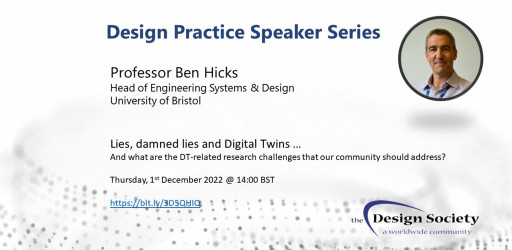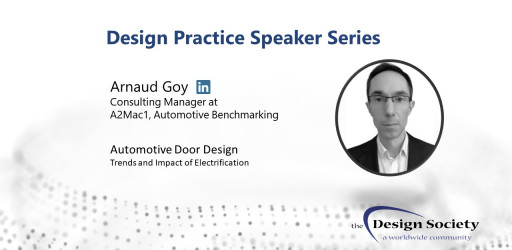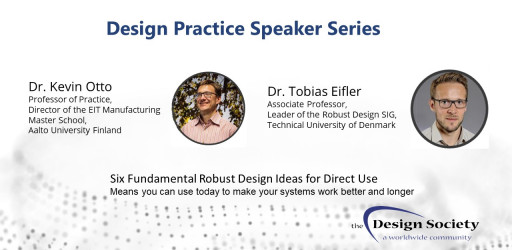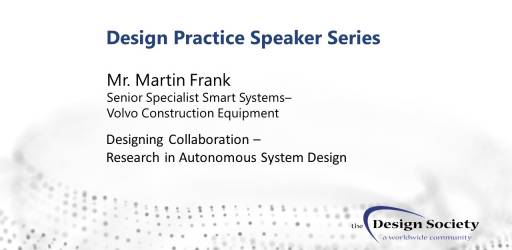Moehringer, S. // 2004
A variety of design models influence the proceeding in mechatronics. Facing the number of existing design models and their heterogeneous representation it is difficult to identify and to compare the ...
Koch, M.; Meerkamm, H. // 2004
The design methodology is assumed to be known and used during every process of design. But very often theory and practice differ in many points. To make these points clear this paper monitors a ...
Ucelli, G.; De Amicis, R.; Conti, G. // 2004
In the rapidly growing global economy car manufacturers now require quality, innovation and short time to market to win the increasing competition. This is traduced in the need for optimization of ...
Meissner, M.; Meyer-Eschenbach, A.; Blessing, L. // 2004
Since coming into effect in 1999, EN 50126 ff. define procedures for the management of the reliability, availability, maintainability and safety (RAMS) of railway applications. As a result, companies ...
Naumann, T.; Vajna, S. // 2004
This paper considers product development as a complex, dynamic system. Within this system, certain characteristics of an object system are synthesised within several processes by an action system in ...
Faisst, K.G.; Dankwort, C. W. // 2004
Aesthetics of a product cannot be considered as independent of the person, looking at or acting with it. This leads to the approach to treat both person and object as one unit (in analogy to Quantum ...
Prat, C.; Ngassa, A.; Bigand, M.; Yim, P. // 2004
Creativity tools can help engineers to mobilize all their technical knowledge to find technological solutions, but they cannot engender the exact solution, so we think it is possible to improve ...
Andersson, Kjell // 2004
Product development is often described as an iterative process of finding solutions that match specific requirements. The many dimensions of this process include time, organization, product-specific ...
Pugliese, D.; Benassi, M.; Bordegoni, M.; Pulli, M. // 2004
Engineering Knowledge Management has proved to be a key enabler to reducing lifecycle costs and time, improving quality and helping to ensure safe products. Two issues have to be considered for the ...
Hollins, B. // 2004
Research of managers responsible for the design process in the service sector around London show they are operating at a suboptimal level and as such, are not developing their new services ...
Bilalis, N.; Katsigiannis, J.A.; Georgilakis, P.S.; Souflaris, A.T.; Antoniadis, A. // 2004
The reduction of development time and cost is a very important task in manufacturing industry. We evaluate a CAD/CAE application for automating the whole design process. The process is modelled using ...
Ariyatum, B.; Holland, R.; Harrison, D. K. // 2004
As smart clothing development involves many disciplines, the challenge is to reconcile the different views. A strategic approach and NPD process for this collaboration is required. An in-depth ...
Burr, H.; Vielhaber, M.; Deubel ,T.; Weber, C.; Haasis, S. // 2004
Although functionalities of engineering systems are rocketing, they currently cannot cope with the development of new engineering methods. Additionally, the data management systems and concepts of ...
Lambeck, P.; Bertsche, B. // 2004
Different levels of creativity are required during the design process. Since most creativity techniques rely on the interaction of several people, the aim of the project described in this paper was ...
Hauck, C.; Meerkamm, H. // 2004
Aim of the actual research period within the collaborative research group 396 is to enhance the application area of an assistant system for lightweight components from the late design stages into the ...
Mival, O. // 2004
This paper proposes a series of principles to be considered when developing creative support systems within a product design company, specifically aimed at bridging the research design divide. The ...
Španiček, Đ.; Indof, J. // 2004
Due to their good properties polymer materials (both polymer and polymer composites) are present in almost all area of human activity. Their final properties are processing-sensitive. In order to ...
Kunz, A.; Sekolec, R.; Meier, M. // 2004
An often-used measure to achieve a more cost-effective realisation of product variety is the development of modular product families. Due to the fact that 70% of the product costs are determined in ...
Jensen, Tormod; Hildre, Mans Petter // 2004
that illustrates the product development process from establishing customer's needs to the manufacturing and supply chain of the family. The majority of existing methods are working on ...
Nándor, B. // 2004
Designing an object of the physical-material world, for fulfilling its certain function, has a professional, logical process from recognizing the problem to produce the object as the solution. The ...
Albers, A.; Stuffer, A.; Arslan, A. // 2004
New outperforming engineering materials like advanced ceramics tend to fail when using the ordinary design process. Excerpts from the adapted design process of high loaded friction systems with high ...
DUHOVNIK, J.; BALI?, S. // 2004
Ensici, A.; Bayazit, N. // 2004
An empirical research is conducted in order to understand the details of the design decision structures and formation; and to determine the components of the design decisions that are produced by the ...






